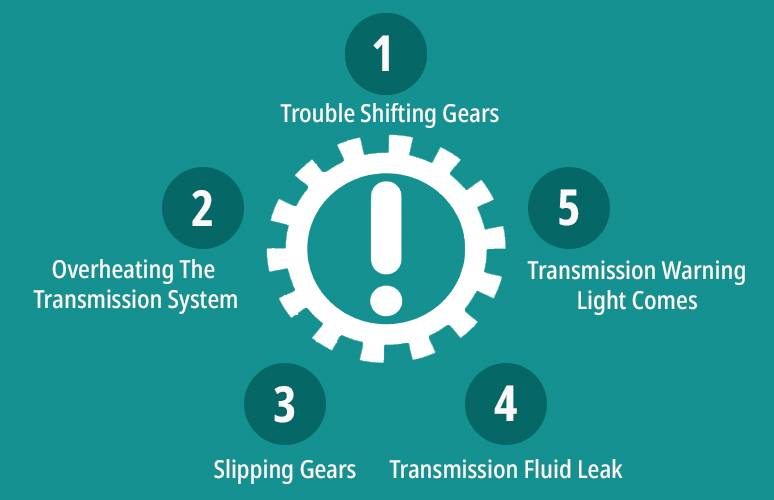10-02-2023

Table of content
What Does Transmission Fluid Do?
What Type of Transmission Fluid Do I Need?
Synthetic vs. Traditional Transmission Fluid:
What Does Transmission Fluid Look Like?
How Often Should Transmission Fluid Be Changed?
How Do I Know if My Transmission Fluid Is Low?
Symptoms of Low Vehicle Transmission Fluid:
Welcome to the GS Caltex India blog! Today, we're going to explore the essential automotive fluid that keeps your vehicle's transmission running smoothly: transmission fluid, also known as transmission oil. This often overlooked but critical fluid plays a vital role in ensuring your vehicle's transmission system functions efficiently. In this blog, we'll delve into what transmission fluid does, the different types available, how to identify potential issues, and how to maintain it properly.
Explore Gear-Transmission Fluids Another important consideration is choosing between synthetic and traditional (conventional) transmission fluid. While both serve the same purpose, synthetic transmission fluid offers certain advantages:
Another important consideration is choosing between synthetic and traditional (conventional) transmission fluid. While both serve the same purpose, synthetic transmission fluid offers certain advantages:

 Allowing your car to run out of transmission fluid can be disastrous for your transmission. The consequences of driving with an empty or critically low transmission fluid level include the following:
Allowing your car to run out of transmission fluid can be disastrous for your transmission. The consequences of driving with an empty or critically low transmission fluid level include the following:

During a transmission flush, a special machine is used to pump new fluid through the transmission, displacing the old fluid and contaminants. This helps in extending the life of your transmission and ensuring smoother performance.[/caption]
What Does Transmission Fluid Do?
Transmission fluid is a specially formulated lubricant designed to serve multiple purposes within your vehicle's transmission system. Its primary functions include:- Lubrication: Transmission fluid provides essential lubrication to the various moving parts of the transmission, reducing friction and preventing excessive wear and tear. This helps extend the life of the transmission components and ensures smooth gear shifts.
- Cooling: The transmission fluid dissipates heat generated during operation, preventing the transmission from overheating. This is crucial because excessive heat can cause damage to the transmission can incur significant repair costs.
- Power Transmission: Transmission fluid allows power to be transmitted from the engine to the wheels by facilitating the engagement and disengagement of gears.
- Seal Protection: It helps maintain proper sealing within the transmission system, preventing leaks that could lead to a loss of fluid and potential damage.
Explore Gear-Transmission Fluids
What Type of Transmission Fluid Do I Need?
The transmission fluid your vehicle needs is determined by its transmission type, which falls into two main categories: automatic transmission fluid (ATF) and manual transmission fluid (MTF).Automatic Transmission Fluid:
Automatic transmission fluid is specifically formulated to meet the demands of automatic transmissions. It possesses unique properties to enable smooth shifting and provide adequate lubrication for the intricate components of automatic transmissions. Using the correct ATF is crucial for the optimal performance and longevity of your automatic transmission.Manual Transmission Fluid:
Manual transmission fluid, on the other hand, is designed to cater to the needs of manual transmissions. Manual transmissions have different gear mechanisms, and MTF provides the necessary protection and lubrication for these components. Using the right MTF ensures proper functioning and protection against wear.Synthetic vs. Traditional Transmission Fluid:
 Another important consideration is choosing between synthetic and traditional (conventional) transmission fluid. While both serve the same purpose, synthetic transmission fluid offers certain advantages:
Another important consideration is choosing between synthetic and traditional (conventional) transmission fluid. While both serve the same purpose, synthetic transmission fluid offers certain advantages:
- Performance: Synthetic transmission fluid typically offers better performance, especially in extreme temperatures and high-stress driving conditions.
- Longevity: Synthetic fluid tends to last longer, which means fewer fluid changes and potentially longer intervals between maintenance.
- Resistance to Breakdown: Synthetic transmission fluid is more resistant to breaking down under high heat, providing better protection for your transmission.
What Does Transmission Fluid Look Like?
Transmission fluid can vary in appearance depending on its type and condition. Typically, it has a reddish hue when new and clean, which distinguishes it from other automotive fluids. Over time, transmission fluid can become darker due to contaminants, but it should not appear excessively dirty or black. If you notice a burnt smell or see particles in the fluid, it's a sign that the fluid needs to be changed.How Often Should Transmission Fluid Be Changed?
The recommended interval for changing transmission fluid can vary based on the make and model of your vehicle. In general, automatic transmission fluid is advised to be changed every 30,000 to 60,000 miles (approximately 48,000 to 96,000 kilometers). For manual transmission fluid, the interval is usually longer, around every 60,000 to 100,000 miles (approximately 96,000 to 160,000 kilometers). Again, it's crucial to refer to your vehicle's owner's manual or consult GS Caltex India's professional mechanics for specific recommendations tailored to your car.How Do I Know if My Transmission Fluid Is Low?
Low transmission fluid can lead to significant issues and must be addressed promptly. Fortunately, there are some signs that can indicate low transmission fluid levels:
Symptoms of Low Vehicle Transmission Fluid:
- Gear Slippage: If your transmission is slipping out of gear or shifting poorly, it could be due to insufficient fluid to create the necessary hydraulic pressure.
- Delayed Shifting: Difficulty in shifting gears or experiencing a delay between gear changes might signal low transmission fluid.
- Strange Noises: Whining, buzzing, or clunking noises during gear changes could indicate low fluid or other transmission problems.
- Fluid Leaks: If you notice reddish or brownish fluid under your vehicle, it may be a sign of a transmission fluid leak.
What Happens if a Car Runs Out of Transmission Fluid?
 Allowing your car to run out of transmission fluid can be disastrous for your transmission. The consequences of driving with an empty or critically low transmission fluid level include the following:
Allowing your car to run out of transmission fluid can be disastrous for your transmission. The consequences of driving with an empty or critically low transmission fluid level include the following:
- Transmission Damage: Insufficient lubrication and cooling can result in severe harm to the internal components of the transmission, potentially leading to expensive repairs or necessitating a full transmission replacement.
- Stalling or Inoperability: Without adequate fluid, your transmission might not be able to engage gears properly, leaving you stranded or unable to move the vehicle.
- Safety Hazards: A malfunctioning transmission can lead to sudden stalls or difficulty in maintaining control of the vehicle, posing significant safety risks to you and others on the road.
What Is a Transmission Flush?
A transmission flush is a maintenance procedure performed to remove old transmission fluid, along with any accumulated contaminants, from the transmission system. This process is typically more thorough than a regular fluid change, as it aims to flush out most of the old fluid.
During a transmission flush, a special machine is used to pump new fluid through the transmission, displacing the old fluid and contaminants. This helps in extending the life of your transmission and ensuring smoother performance.[/caption]